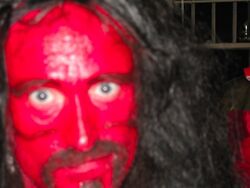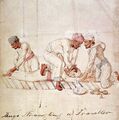Demon (nonfiction): Difference between revisions
| Line 19: | Line 19: | ||
== Fiction cross-reference == | == Fiction cross-reference == | ||
* [[Hemogorgon]] | |||
Categories: | Categories: | ||
Revision as of 14:22, 5 March 2017

A demon (from Koine Greek δαιμόνιον daimonion), or fiend is a supernatural, often malevolent being prevalent in religion, occultism, literature, fiction, mythology and folklore. See also Monster.
The original Greek word daimon does not carry the negative connotation initially understood by implementation of the Koine δαιμόνιον (daimonion), and later ascribed to any cognate words sharing the root.
In Ancient Near Eastern religions as well as in the Abrahamic traditions, including ancient and medieval Christian demonology, a demon is considered an unclean spirit, a fallen angel, or a spirit of unknown type which may cause demonic possession, calling for an exorcism.
In Western occultism and Renaissance magic, which grew out of an amalgamation of Greco-Roman magic, Jewish Aggadah and Christian demonology, a demon is believed to be a spiritual entity that may be conjured and controlled.
In the News
Demon-hunters capture their prey. One hunter grips the Demon's feet, another its hands, while the third weaves a sacred ligature around the Demon's neck.
Writer-Sorceror Roger Zelazny (working with Artist-Engineer William Blake) conjures a Venn diagram against an unnamed Demon.
Slate-Waker hired to frighten off Demons, gives good value for dollar.
Fiction cross-reference
Categories:
Nonfiction cross-reference
External links:





